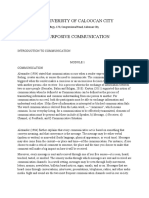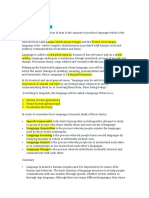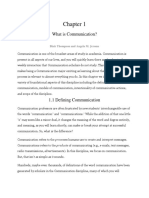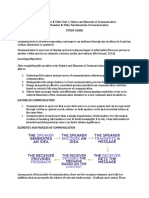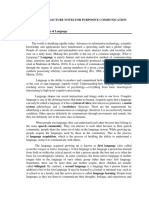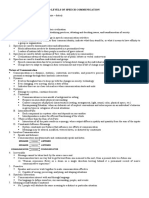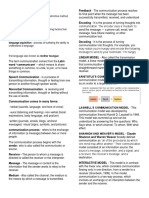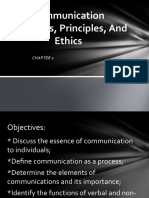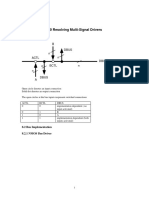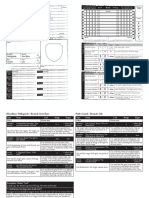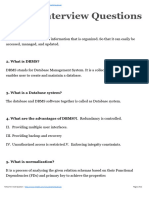0% found this document useful (0 votes)
150 views7 pagesTenets of Communication
The document discusses the key concepts of communication, including its definition, elements, and process. It notes that communication allows people to express ideas, feelings, wants and needs. The communication process involves a sender transmitting a message to a receiver, who then responds. Communication is influenced by various factors like setting, noise, experiences and interpretations of the parties involved. It is a complex and dynamic process with interconnected components.
Uploaded by
Jea Marie MendozaCopyright
© © All Rights Reserved
We take content rights seriously. If you suspect this is your content, claim it here.
Available Formats
Download as DOCX, PDF, TXT or read online on Scribd
0% found this document useful (0 votes)
150 views7 pagesTenets of Communication
The document discusses the key concepts of communication, including its definition, elements, and process. It notes that communication allows people to express ideas, feelings, wants and needs. The communication process involves a sender transmitting a message to a receiver, who then responds. Communication is influenced by various factors like setting, noise, experiences and interpretations of the parties involved. It is a complex and dynamic process with interconnected components.
Uploaded by
Jea Marie MendozaCopyright
© © All Rights Reserved
We take content rights seriously. If you suspect this is your content, claim it here.
Available Formats
Download as DOCX, PDF, TXT or read online on Scribd
/ 7















